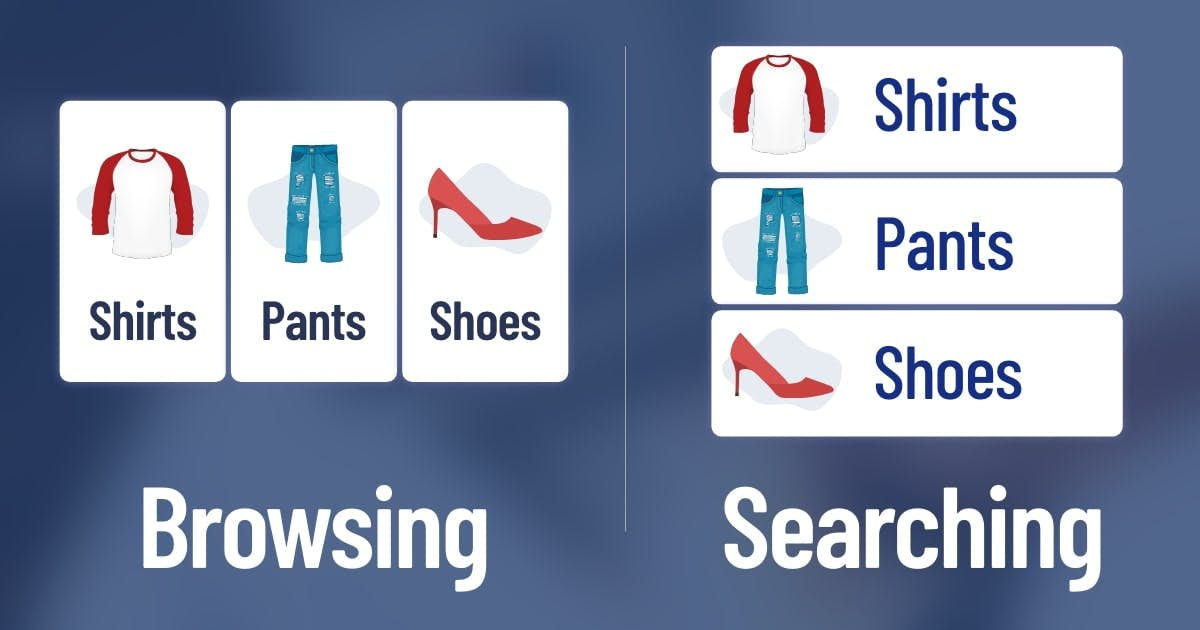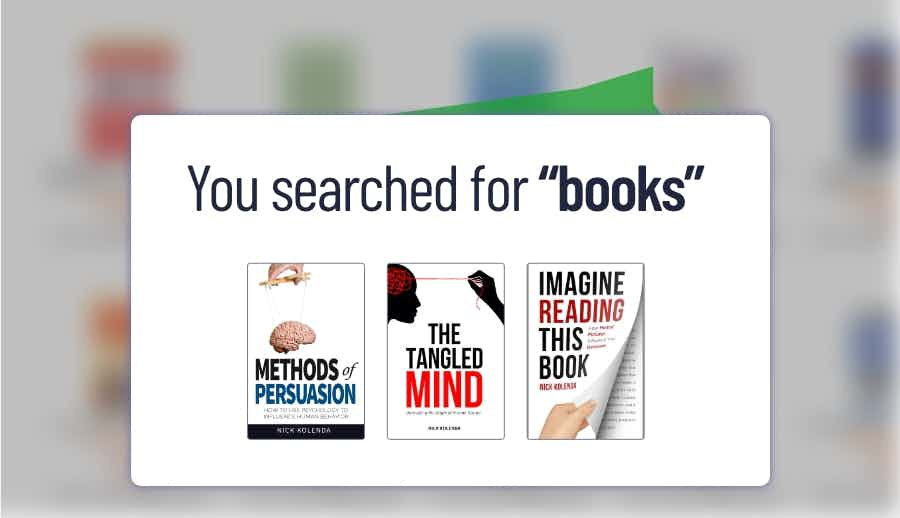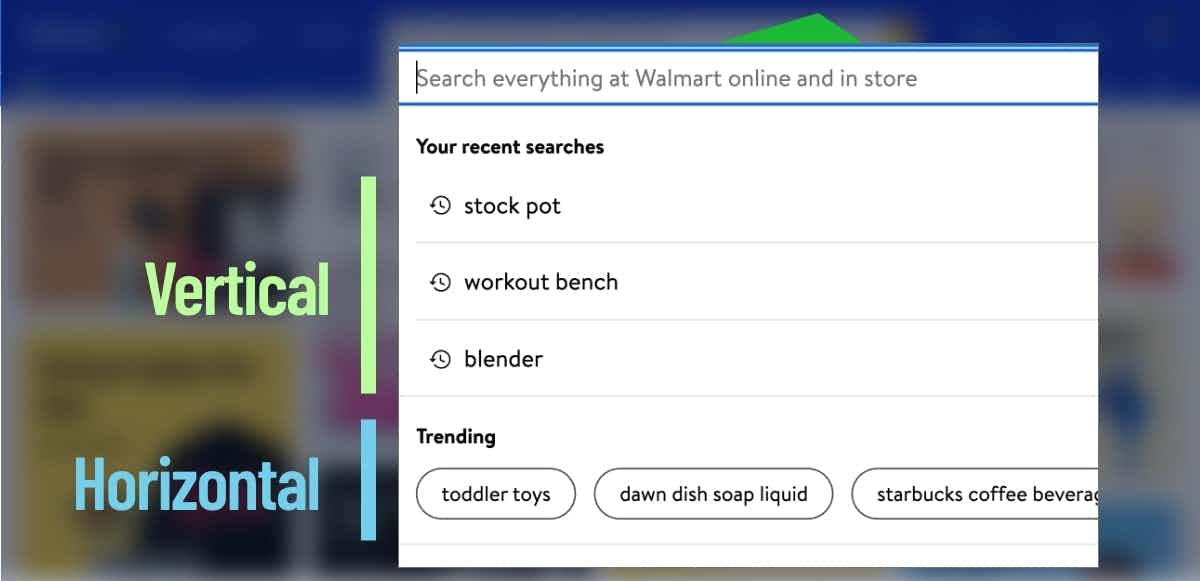Arrange Products Horizontally for Browsing
Customers browse horizontally, but they search for specific products vertically.

Overview
Customers browse horizontally.
Human eyes are aligned in a horizontal line, which makes it easier to scan horizontal assortments (Deng, Kahn, Unnava, & Lee, 2016).
On Amazon, a general search—books—shows a horizontal list of books:

Vertical lists help customers find specific options. Thanks to the left-alignment, it's easier to look for specific words.
If you search for a specific book—Methods of Persuasion—Amazon shows a vertical list:

Plus, these options now appear at the top — in the exact location of the customer's gaze. Less relevant products will be hidden below, especially on mobile devices (Huang, Juaneda, Sénécal, & Léger, 2021).
Walmart follows this strategy, too. Recent searches are vertical, but trending searches (which encourage browsing) are horizontal:

- Deng, X., Kahn, B. E., Unnava, H. R., & Lee, H. (2016). A “wide” variety: Effects of horizontal versus vertical display on assortment processing, perceived variety, and choice. Journal of Marketing Research, 53(5), 682-698.
- Huang, B., Juaneda, C., Sénécal, S., & Léger, P. M. (2021). “Now You See Me”: the attention-grabbing effect of product similarity and proximity in online shopping. Journal of Interactive Marketing, 54(1), 1-10.
